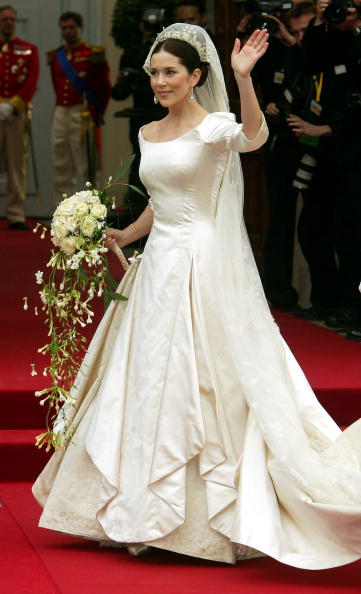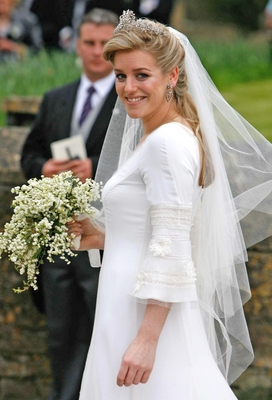Until Friday morning, probably the biggest mystery surrounding the latest British royal wedding was who designed Kate Middleton's wedding dress.
But when the future Queen Elizabeth II (pictured) walked down the aisle in London's Westminster Abbey in 1947, her wedding dress was more than a fashion statement: It represented the hopes of a nation, according to royal wedding gown curator Joanna Marschner.
With food and clothing still being rationed in postwar Britain, royal dressmaker Norman Hartnell sought to convey a message of national renewal, instead of focusing on opulent materials. He did this in part by embroidering the gown with garlands of spring flowers.
"It is a dress with a message for that particular moment in time," said Marschner, of Historic Royal Palaces, an independent charity that acts as caretaker for five British royal buildings.
"I think you can say that about all the royal wedding dresses—they have become amazing documents that can say a lot about the year when they were worn."
But when the future Queen Elizabeth II (pictured) walked down the aisle in London's Westminster Abbey in 1947, her wedding dress was more than a fashion statement: It represented the hopes of a nation, according to royal wedding gown curator Joanna Marschner.
With food and clothing still being rationed in postwar Britain, royal dressmaker Norman Hartnell sought to convey a message of national renewal, instead of focusing on opulent materials. He did this in part by embroidering the gown with garlands of spring flowers.
"It is a dress with a message for that particular moment in time," said Marschner, of Historic Royal Palaces, an independent charity that acts as caretaker for five British royal buildings.
"I think you can say that about all the royal wedding dresses—they have become amazing documents that can say a lot about the year when they were worn."








No comments:
Post a Comment